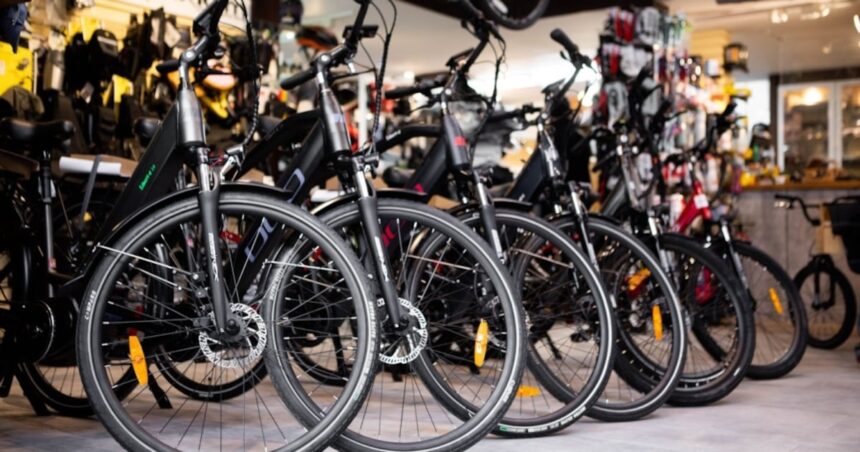In the quiet dawn hours along Toronto’s waterfront, a subtle revolution is taking place. Where once the paths were dominated by traditional cyclists pumping pedals through sheer determination, now there’s a new breed of rider—one who arrives at their destination with the same wind-swept hair but considerably less sweat. E-bikes have transformed from novelty to necessity for a growing number of Canadians, and the reasons extend far beyond the simple allure of an easier ride.
“I was skeptical at first,” admits Melissa Chen, a 42-year-old Toronto professional who switched to an e-bike last year. “But now I’m commuting 15 kilometers each way and arriving at meetings without needing to change clothes or find a shower. It’s changed my relationship with the city.”
The numbers reflect this growing enthusiasm. E-bike sales across Canada have surged over 300 percent since 2019, with particularly strong growth in urban centers and among riders aged 35-65. What’s driving this dramatic shift isn’t merely convenience—it’s a convergence of economic pressures, environmental consciousness, and technological improvements that have created the perfect conditions for an e-bike boom.
The E-Bike Advantage: More Than Just Assistance
The fundamental appeal of e-bikes lies in their ability to flatten hills, neutralize headwinds, and extend realistic commuting distances. Modern e-bikes typically offer pedal assistance up to 25-32 km/h, effectively removing the most challenging aspects of cycling while preserving its core benefits.
“We’re seeing people rediscover cycling who had given it up years ago,” explains Jerome Lambert, owner of Volt Electric Bikes in Montreal. “Knee problems, cardiac conditions, age-related fitness concerns—the electric assist removes these barriers while still providing meaningful exercise.”
This last point deserves emphasis. Research from the University of Colorado Boulder found that e-bike commuters still received 75 percent of the cardiovascular benefits of traditional cycling. The assistance doesn’t eliminate exercise—it modulates it to sustainable levels that encourage consistent use.
Understanding Your Options
The Canadian e-bike market presents three primary categories, each serving distinct needs:
Class 1 e-bikes provide pedal assistance only when the rider is actively pedaling, with power cutting out at 32 km/h. These represent the majority of commuter e-bikes sold in Canada.
Class 2 models include both pedal assistance and throttle control (allowing movement without pedaling) but still cap speeds at 32 km/h.
Class 3 e-bikes, less common in Canada due to regulatory restrictions, can reach assisted speeds of 45 km/h and face more stringent usage rules on paths and trails.
“The classification system matters because it determines where you can legally ride,” notes cycling advocate and CO24 Trends contributor Sarah Mancini. “Most urban cycling infrastructure in Canada is designed with Class 1 e-bikes in mind.”
When shopping for an e-bike, Canadians should consider several crucial factors beyond just assistance level:
Battery range: Most quality e-bikes offer 40-100 km per charge, though actual range varies dramatically based on terrain, rider weight, assistance level, and weather conditions.
Motor placement: Hub motors (in the wheel) are simpler and less expensive, while mid-drive motors (at the pedals) offer better balance, natural handling, and more efficient power delivery on hills.
Weight considerations: E-bikes typically weigh 20-30 kg—significantly heavier than conventional bicycles. This becomes important when carrying the bike up stairs or loading it onto public transit.
Weather resistance: Canada’s diverse climate demands thoughtful consideration. Look for sealed electrical components and rust-resistant materials if you plan to ride year-round.
The Economic Equation
With prices ranging from $1,500 for entry-level models to $8,000+ for premium options, e-bikes represent a significant investment. However, the economic calculus changes dramatically when viewed as transportation rather than recreation.
“I was spending nearly $400 monthly on gas, parking, and maintenance for short urban trips,” says Marc Tremblay, a Quebec City resident who switched to an e-bike in 2021. “My $3,000 e-bike paid for itself in eight months, and now I’m essentially traveling for free aside from occasional maintenance.”
The CO24 Culture team has documented similar stories across Canadian cities, where e-bikes increasingly represent not just an environmental choice but a pragmatic financial decision. With urban parking costs soaring and fuel prices unpredictable, the fixed investment of an e-bike offers welcome financial stability.
Navigating Canadian Regulations
Canadian e-bike regulations create a sometimes confusing patchwork of rules that vary by province and even municipality. Federally, e-bikes must have functional pedals, motors not exceeding 500W, and maximum assisted speeds of 32 km/h. However, provincial regulations add additional layers of complexity:
In Ontario, riders must be 16 or older and helmets are mandatory for riders under 18.
Quebec requires riders to be at least 14 and mandates helmets for all e-bike users regardless of age.
British Columbia classifies certain higher-powered e-bikes as limited-speed motorcycles, requiring insurance and driver licensing.
“The regulatory environment is still catching up to the technology,” observes urban planning expert Michael Desjardins in a recent CO24 Opinions piece. “Most Canadian cities are working to clarify their approach to e-bikes, but riders should research local rules before making a purchase.”
The Road Ahead: E-Bikes and Canadian Urban Planning
The surge in e-bike adoption is forcing Canadian cities to rethink cycling infrastructure. Traditional bike lanes designed for 15-20 km/h traffic now must accommodate e-bikes traveling 25-32 km/h, creating new challenges for urban planners.
Montreal leads North America with its implementation of separated “express lanes” for faster cycling traffic, while Vancouver has expanded bike lane widths on major corridors to facilitate safer passing. Toronto has launched a pilot program studying traffic flow patterns at intersections with high e-bike usage.
“The e-bike revolution represents both challenge and opportunity,” notes urban mobility researcher Dr. Alexandra Wong. “These vehicles occupy a middle ground between traditional bikes and cars, potentially drawing users from both categories and reducing overall congestion.”
As e-bikes continue their trajectory from novelty to mainstream transportation, their integration into Canadian urban landscapes appears inevitable. For prospective buyers, the technology offers a compelling blend of exercise, convenience, and sustainability—a rare win-win-win proposition in today’s complex transportation landscape.
Before purchasing, consider renting different models to determine which configuration best suits your needs. Test rides reveal subtleties in handling, power delivery, and comfort that specifications alone cannot convey. Most importantly, remember that the best e-bike is the one that gets ridden consistently, transforming from an expensive purchase into a valuable tool for daily living.
As Chen, our Toronto commuter, puts it: “My e-bike isn’t just transportation—it’s reclaimed time, improved health, and freedom from traffic stress. I can’t imagine going back.”










